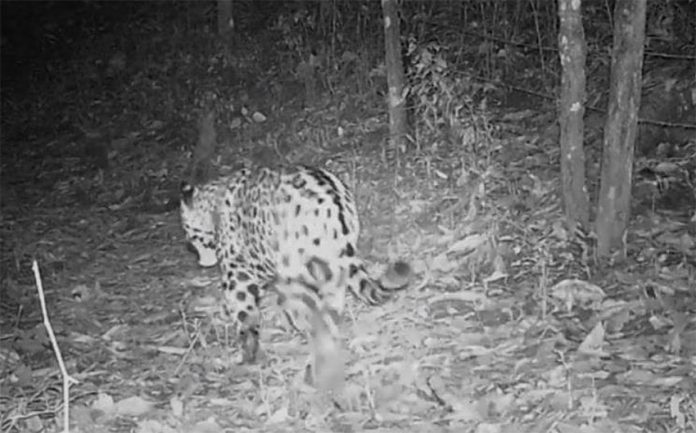Federal environmental authorities are celebrating the discovery of a jaguar for the first time in a specific area of the Sierra de Manantlán Biosphere Reserve in Jalisco and Colima, indicating that despite illegal hunting and forest fires in the region in recent years, the national jaguar population is continuing to grow.
Jaguars were first spotted in the UNESCO-listed reserve in 2009. According to Mexico’s federal natural protected areas office, Conanp, it’s believed that the protected area is maintaining a population of two jaguars per 100 square kilometers.
The jaguar’s discovery in the Cerro Grande was made through a camera planted in that area of the reserve, where local residents are involved in Conanp’s jaguar conservation program, monitoring wildlife species on their land.
Conanp said the discovery is motivating the residents to continue preservation activity.
“It reinforces the idea that the protection and conservation of ecosystems is a matter of the planet’s health and of our own selves as the species that inhabits it,” Conanp said in a press release.
According to the 2018 national jaguar census, conducted by Conanp with the National Autonomous University and other institutions, there are approximately 4,800 jaguars in the wild in Mexico. The International Union for the Conservation of Nature says that Mexico’s population of jaguars is one of the world’s most threatened.
The Sierra de Manantlán Biosphere Reserve, a national protected area listed on UNESCO’s World Network of Biosphere Reserves, is considered to have the greatest biodiversity in western Mexico. According to Conanp, it hosts 120 mammal species, including examples of each of Mexico’s six wild feline species.
The Manantlán reserve also provides connectivity to jaguar populations in Michoacán that roam toward the Chamela Cuixmala Biosphere Reserve in Jalisco and the National Swamplands Biosphere Reserve in Nayarit.
Source: Milenio (sp), UDG TV (sp)
